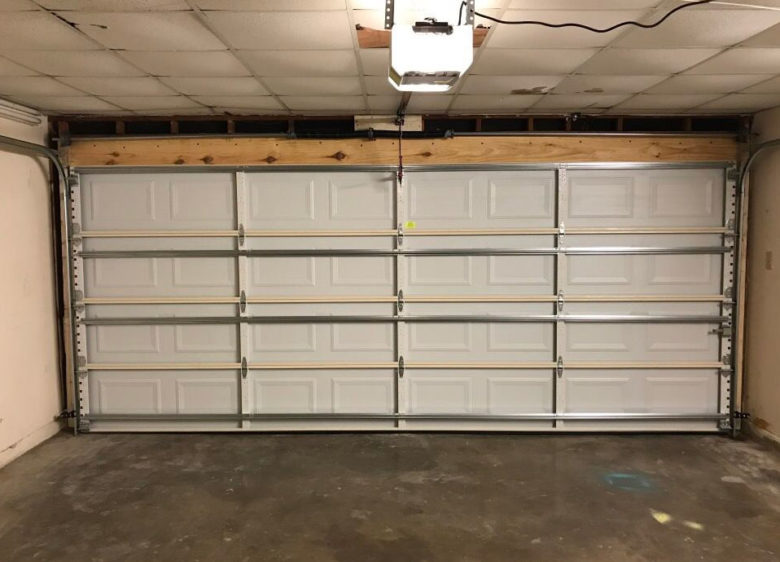Painting a new steel Garage Door Repair Castle Rock CO is a straightforward process that can enhance its appearance and protect it from the elements.

Follow these steps to paint your new steel garage door effectively:
- Gather Your Supplies: Before you begin, gather all the necessary supplies:
- Exterior latex paint specifically formulated for metal surfaces
- Primer suitable for use on metal
- Paintbrushes or rollers
- Painter’s tape
- Drop cloths or plastic sheeting to protect surrounding areas
- Sandpaper or sanding block (optional)
- Tack cloth or damp cloth for cleaning
- Prepare the Surface: Start by preparing the surface of the steel garage door for painting. If the door is new, it may already have a factory-applied primer. However, if the surface is rough or has imperfections, you may want to lightly sand it with fine-grit sandpaper to smooth out any rough spots. Use a tack cloth or damp cloth to remove any dust or debris from the surface.
- Clean the Surface: Clean the surface of the garage door to remove any dirt, grease, or grime that may prevent the paint from adhering properly. Use a mild detergent or degreaser and water to wash the door thoroughly. Rinse with clean water and allow the surface to dry completely before proceeding.
- Protect Surrounding Areas: Use painter’s tape to mask off any areas of the garage door that you do not want to paint, such as windows, handles, or trim. Cover the surrounding areas with drop cloths or plastic sheeting to protect them from overspray or drips.
- Apply Primer: Apply a coat of primer to the steel garage door using a paintbrush or roller. Make sure to use a primer specifically designed for metal surfaces. Apply the primer evenly, covering the entire surface of the door. Allow the primer to dry completely according to the manufacturer’s instructions.
- Sand (Optional): If necessary, lightly sand the primed surface with fine-grit sandpaper or a sanding block to smooth out any rough areas or imperfections. Wipe away any dust with a tack cloth or damp cloth before proceeding.
- Apply Paint: Once the primer is dry and the surface is smooth, it’s time to apply the paint. Stir the paint thoroughly before use, and pour it into a paint tray if using a roller. Apply the paint evenly to the steel garage door using a paintbrush or roller, working in small sections to ensure even coverage. Be careful not to apply too thick a coat to avoid drips or runs.
- Allow to Dry: Allow the first coat of paint to dry completely according to the manufacturer’s instructions. Depending on the type of paint used and the environmental conditions, this may take several hours.
- Apply Additional Coats (If Needed): If necessary, apply additional coats of paint to achieve the desired color and coverage. Allow each coat to dry completely before applying the next one. Most paint manufacturers recommend applying at least two coats for optimal durability and coverage.
- Remove Masking Tape: Once the final coat of paint has dried completely, carefully remove the painter’s tape from the garage door, being careful not to disturb the paint. Dispose of the drop cloths or plastic sheeting used to protect surrounding areas.
- Inspect and Touch Up: After the paint has dried completely, inspect the garage door for any missed spots or uneven areas. Touch up any imperfections with additional paint as needed, using a small brush or roller.
- Allow to Cure: Allow the painted garage door to cure fully before using it or exposing it to harsh weather conditions. This typically takes several days to a week, depending on the type of paint used and the environmental conditions.
Garage Door Repair Castle Rock CO Following these steps will help you achieve a professional-looking finish and protect your new steel garage door for years to come.
Martin Garage Door
10411 S Parker Rd, Parker, CO 80134, United States
1-303-663-1310


